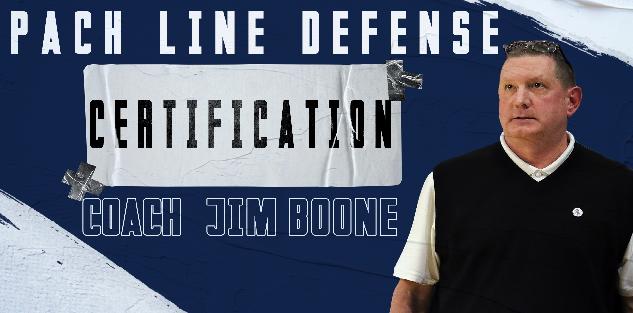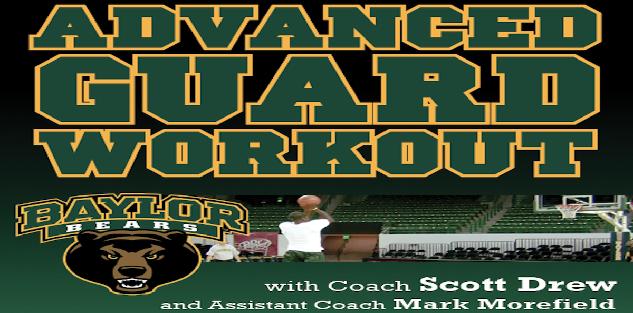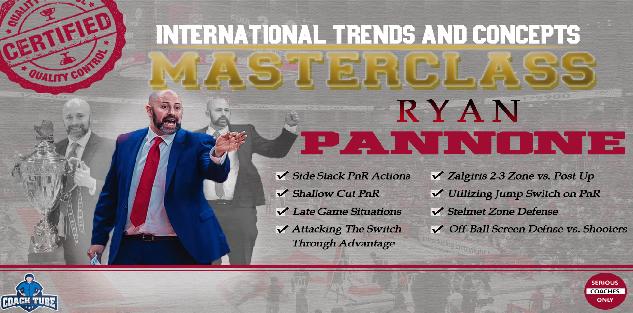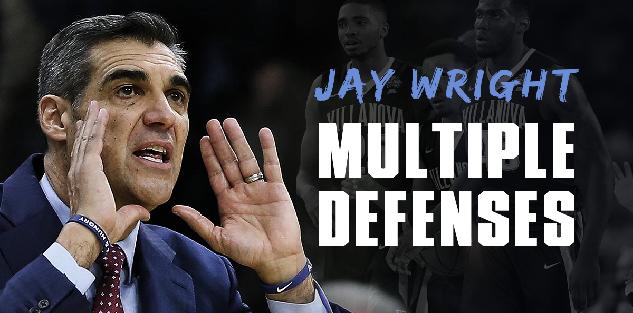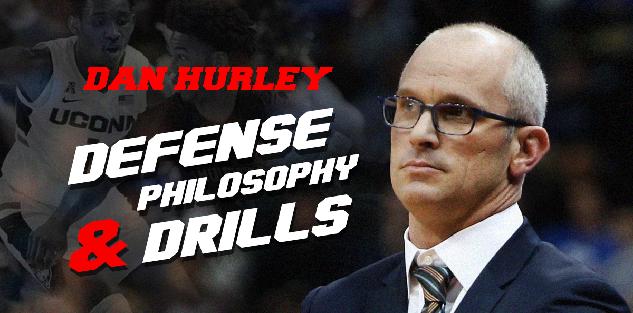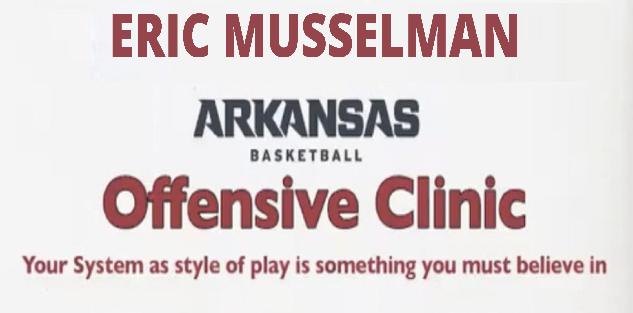Featured courses
- Two Great Game Situational Workouts For the Basketball Offseason by Grant Young
- Two Reads Basketball Players Must Understand Before Executing the Ball-Screen by Grant Young
- Two of LSU Coach Kim Mulkey’s Game-Winning Inbounds Plays by Grant Young
- Three Effective Early-Season Defensive Basketball Drills by Grant Young
- Four Essential Tips For Basketball’s 1-3-1 Zone Defense by Grant Young
- Four Zone Defense Drills to Strengthen Your Team by Grant Young
- How to Beat the Three Most Common Pick and Roll Coverages by Grant Young
- Two Drills to Improve Shooting at the Start of the Basketball Season by Grant Young
- Core Basketball Principles That Dallas Mavericks Coach Sean Sweeney Teaches by Grant Young
- Three Competitive Shooting Drills For Your Basketball Team by Grant Young
- How To Teach The ‘I’ Generation of Basketball Players by Grant Young
- Three Elite Drills to Begin a Basketball Practice With by Grant Young
- How to Build a Championship-Winning Basketball Team Culture by Grant Young
- Two of Texas Women’s Basketball Coach Vic Schaefer’s Tips For Team Culture by Grant Young
- Atlanta Dream WNBA Coach Brandi Poole’s Four Sets for Secondary Offense by Grant Young
- NC State Basketball Coach Brett Nelson’s 4 Crucial Point Guard Qualities by Grant Young
- Kentucky Coach Mark Pope’s Five Guard Rules For Offense by Grant Young
- McNeese State Basketball Coach Will Wade’s 4 Core Pillars by Grant Young
- 4 Tips To Instantly Improve Your Free Throw Shooting by Tyler Linderman
- Assemble a Championship-Caliber Basketball Rotation by Brandon Ogle
- Two of UConn Coach Dan Hurley’s Key Defensive Drills by Grant Young
- Four Post Moves All Basketball Forwards Should Have In Their Bag by Grant Young
- Four of Baylor Coach Nicki Collen’s Midseason Pick and Roll Adjustments by Grant Young
- WNBA Legend Sue Bird’s Two Tips For Attacking on Offense by Grant Young
- Houston Coach Kelvin Sampson’s Three Keys for Building a Basketball Program by Grant Young
- Two of Tom Izzo’s Top Michigan State Defensive Drills by Grant Young
- Four of Olympic Gold Medalist Coach Mechelle Freeman’s Relay Race Strategies by Grant Young
- Three Key Strategies Will Wade Uses to Build a Dominant Team by William Markey
- Five UConn Huskies Men’s Basketball Plays That You Can Use by Grant Young
- Three Tips for Maintaining Team Culture at the End of a Basketball Season by Grant Young
- Three Dribble Drive Motion Drills to Teach Your Basketball Team by Grant Young
- Three Dribbling Drills For Non-Primary Ball Handlers by Grant Young
- Four Advanced Ball Handling Drills For Basketball Guards by Grant Young
- Three Tips to Sharpen Your Post Player’s Footwork in Basketball by Grant Young
- These Three Pick and Roll Drills Are Crucial For Any Ball Screen Offense by Grant Young
- Three Closeout Drills to Improve Basketball Shooting Defense by Grant Young
- Three Tips to Perfect the Packline Defense in Basketball by Grant Young
- Four Keys to Executing the Read and React Offense in Basketball by Grant Young
- Three Tips to Develop Elite Basketball Shooters by Grant Young
- Three Crucial Keys to Executing the 5 Out Offense in Basketball by Grant Young
- These Three Offensive Sets Will Help You Beat Any Zone Defense by Grant Young
- Three Transition Basketball Drills To Play With More Pace by Grant Young
- Three 5 Out Offense Drills Any Basketball Coach Can Use by Grant Young
- Four Vital Techniques for a Motion Offense in Basketball by Grant Young
- Three Baseline Inbounds Plays To Win Your Basketball Team Games by Grant Young
- Four Drills For Sharpening the European Ball Screen Offense by Grant Young
- Three Positioning Tricks For a Basketball Zone Offense by Grant Young
- Three Rules to Perfecting Basketball's Lock Left Defensive System by Grant Young
- UCLA WBB Coach Cori Close’s Two Keys to Winning the Mental Game by Grant Young
- Four of Alabama Coach Nate Oats’ Favorite Basketball Drills by Grant Young
- Three Ways To Turn Transition Offense in Basketball Into Points by Grant Young
- Three Drills to Master Basketball's Pack Line Defense by Grant Young
- Three Transition Defense Drills to Halt Fast Breaks by Grant Young
- Four Offensive Rebounding Drills to Win Second Possessions by Grant Young
- 4 Defensive Technique Drills from Boston Celtics Assistant Coach Brandon Bailey by Marek Hulva
- 5 Drills to Improve Ball Handling by Tyler Linderman
- 13 FUNNY BASKETBALL GIFS by Alex
- BASKETBALL SPEED AND AGILITY: 8 QUESTIONS FOR COACHTUBE EXPERT RICH STONER by Jaycob Ammerman
- Defensive Strategies for Basketball by Ryan Brennan
- 4 Keys To Turning Your Program Into Championship Contender By Dallas Mavericks Coach Sean Sweeney by Marek Hulva
- 5 Components to Creating a Winning Basketball Program by Justin Tran
- Guide to Becoming a Lethal Scorer in Basketball by Justin Tran
- Zone Defense In the NBA Eastern Conference Finals by James Locke
- Mastering Court Mobility: Tips for Effective Movement in Basketball by Justin Tran
- 5 Basketball Shooting Drills: How to Develop a Sharpshooter by James Locke
- 6 Points of Emphasis for a Successful 5 Out Offense by Jaycob Ammerman
- Effective and Efficient Methods to Practice During the Basketball Season by Justin Tran
- Three Great Passing Drills From a Basketball Coaching Legend by Grant Young
- 7 Principles For Perfecting the Princeton Offense in Basketball by Grant Young
- How to Replicate A Modern NBA Offense by Grant Young
- Three Great Two-Ball Dribbling Drills For Basketball Development by Grant Young
- Two Rebounding Drills to Win Your Basketball Team Championships by Grant Young
- How to Improve Your Basketball Team’s Defense With the Shell Drill by Grant Young
- How Baylor Basketball’s Scott Drew Develops Elite Guard Play by Grant Young
- Off-Ball Movement Tips and Strategies: Lessons From the NBA Finals by James Locke
- Player Development: Scott Drew’s Tips for Producing NBA Guards by James Locke
- How to Execute a Spread Offense in Basketball by Grant Young
- Four Quality Quotes From Four Final Four Coaches by Grant Young
- A Guide to the Pack Line Defense by Alex Martinez
- 3 Defensive Build Up Drills to Improve Team Basketball Defense by Grant Young
- Battle of Two Great Coaches: Best Plays from the NBA Finals Contenders by Justin Tran
- 10 Creative Ways Athletic Programs Can Use a Video Board to Raise Money by Coach Williams
- How to Use 3 on 3 to Improve Your Basketball Team by Grant Young
- How to Defend the Pick and Roll by Grant Young
- Mastering Basketball Defense: Techniques, Drills, and Strategies for Success by Justin Tran
- Three Tips From The Coach Who Developed Giannis Antetokoumnpo by Grant Young
- 2023 NBA Draft: Skills and Technique from Top Prospects by Justin Tran
- From College to the Pros: Transitioning the Dribble Drive Offense by Justin Tran
- Positionless Basketball: Redefining Roles on the Court by Justin Tran
- Revolutionize Your Offense: Proven Concepts to Elevate Your Basketball Game by Justin Tran
- 5 Essential Fastbreak Drills Every Basketball Coach Should Know by James Locke
- How to Run a Circle Offense in Basketball by Grant Young
- Game-Changing Strategies: ATO Plays in the EuroLeague and Olympics by Justin Tran
- How to Stand Out at Basketball Tryouts by Grant Young
- How to Improve Your Basketball Team’s Transition Defense by Grant Young
- Indiana Fever GM Lin Dunn’s Two Keys For Women’s Basketball Coaches by Grant Young
- Strength Training Strategies Every Basketball Player Should Have by Grant Young
- A WNBA Basketball Coach’s Four Priorities In Transition Defense by Grant Young
- Three Adjustments to Make When Your Basketball Offense Isn’t Working by Grant Young
- Three Pillars to Applying Defensive Pressure on the Basketball Court by Grant Young

Three Pillars to Applying Defensive Pressure on the Basketball Court
- By Grant Young
Applying pressure during basketball defense throughout games is vital for a team’s success for several reasons.
First, it can disrupt the opposing team's offensive rhythm and flow, making it difficult for them to run their plays effectively. By pressuring the ball handler and denying easy passing lanes, the defensive team can force turnovers and create scoring opportunities in transition.
Additionally, defensive pressure can wear down the opposing team both physically and mentally. Constant pressure forces the opposing players to work harder to get open and make plays, leading to fatigue and potential mistakes. This can also lead to frustration and impatience, causing the opposing team to rush their shots and make poor decisions.
Not to mention that applying defensive pressure can help set the tone for the game and establish a sense of urgency and intensity for the entire team. It can energize the defensive players and the crowd, creating momentum that can swing the game in favor of the defensive team.
All of these reasons indicate why applying pressure on defense in basketball is a fundamental strategy for disrupting the opposing team's offense, creating scoring opportunities, and establishing a competitive edge on the court.
Yet, turning your basketball team into a stalwart, pressure-based defensive force is easier said than done. When an undisciplined or under-coached team tries to apply pressure, mistakes can often get made, which will lead to easy baskets on the other end. This is why knowing how to teach pressure-centric defense is even more important than deciding to do so in the first place.
And Joe Golding is among basketball’s elite in teaching this tactic.
Coach Golding was appointed the 20th head coach in UTEP (University of Texas at El Paso) men’s basketball history on April 13, 2021. This came after Coach Golding led Abilene Christian to the NCAA Tournament in two of his final three seasons with the program and an upset win over third-seed Texas in the 2021 "Big Dance".
Coach Golding’s ‘Joe Golding/ Brette Tanner - ACU Pressure Defense’ course explains how culture can be built on the foundation of playing hard, along with the core defensive drills from 1-1 all the way up to 4-4 to build a team defense built on intense ball pressure, quick rotations, and communication on the floor.
Building A Culture
When building a defense, Coach Golding explains that, first and foremost, players need to understand what’s important to a team. So before you start worrying about tactics on the court, coaches should decide what their team’s core cultural pillars will be that they can return to and which their players should abide by.
In addition, coaches can’t expect their teams to become good at pressure-based defense if they don’t commit time to it. There should be portions of every practice that are dedicated to defense; especially pressure-based defense because it relies on timing, consistency, and good conditioning in order to execute well during games. Coach Golding notes that, in the first month of practices every season, the first hour of every single practice is dedicated to defense.
Plus, watching film with your team (even if it’s just practice film) is crucial to playing good pressure-based defense, so your players can have a visual representation of what they’re doing right and wrong during any given play. And as a coach, being able to point it out to them in real-time will serve as immediate feedback that will be extremely beneficial for not just that player, but for the entire team.
Finally, a coach needs to speak their team’s defensive mindset and success into existence. Saying aloud that you’re going to have the best defensive team in your league or conference every day, in front of your players, is the best way to get them to believe it, which will then get them to commit to becoming that.
Our Principles
While Coach Golding admits that at the beginning of every season, every team should be saying that they’re going to be the hardest-working team in the country. While this will obviously be untrue for the vast majority of teams, the point is that setting a standard of hard work should be paramount to every coaching staff.
Another vital aspect of Coach Golding’s defense is that his team can’t give up the middle drive. While this may be different for every team’s philosophy, a guard driving into the middle of the paint puts pressure on a defense, which runs contrary to the pressure-based defense Coach Golding wants to run.
He also wants to put hard pressure on the wings to dissuade three-point attempts and also emphasize rotating hard and often, to keep pressure on the opponent to keep the ball moving and find the open player.
Another reason Coach Golding wants to keep shooters off of the three-point line is because more pressure on them means more dribbling, and more dribbling means more mistakes (which leads to points).
Rotate and Help

Because applying pressure in defense also lends itself to making occasional mistakes in the name of aggression, pressure-based defensive teams must be also elite at rotating.
Coach Golding explains that to improve his team’s defensive rotations, he runs the shell drill at least three times per week.
While there are many variations of the shell drill, the essential premise is that it involves organizing four defenders around the key area while one offensive player stands at the center. This player will pass the ball around the wings, facilitating different rotations between the defenders depending on where the ball is at.
The main goal of the shell drill is to facilitate communication between defenders and get the game-like repetitions that these defenders might face in a game.

